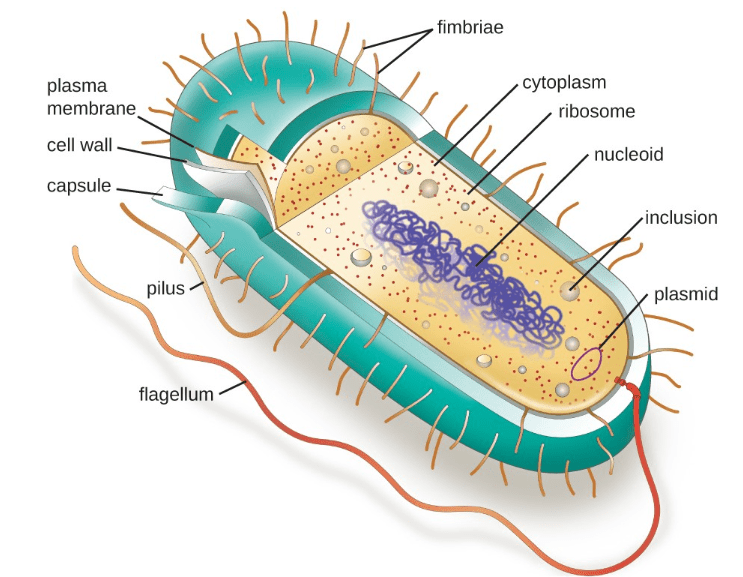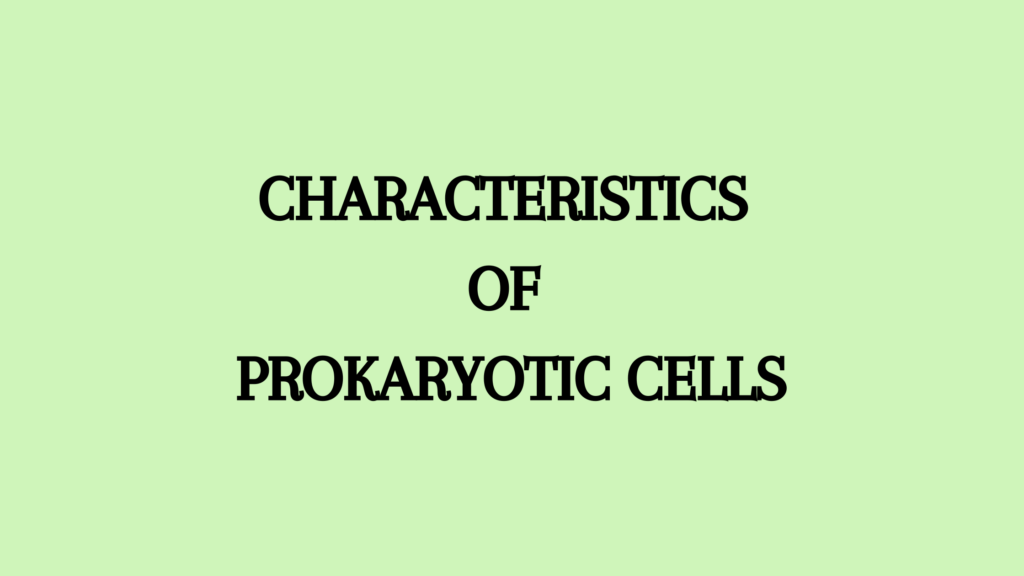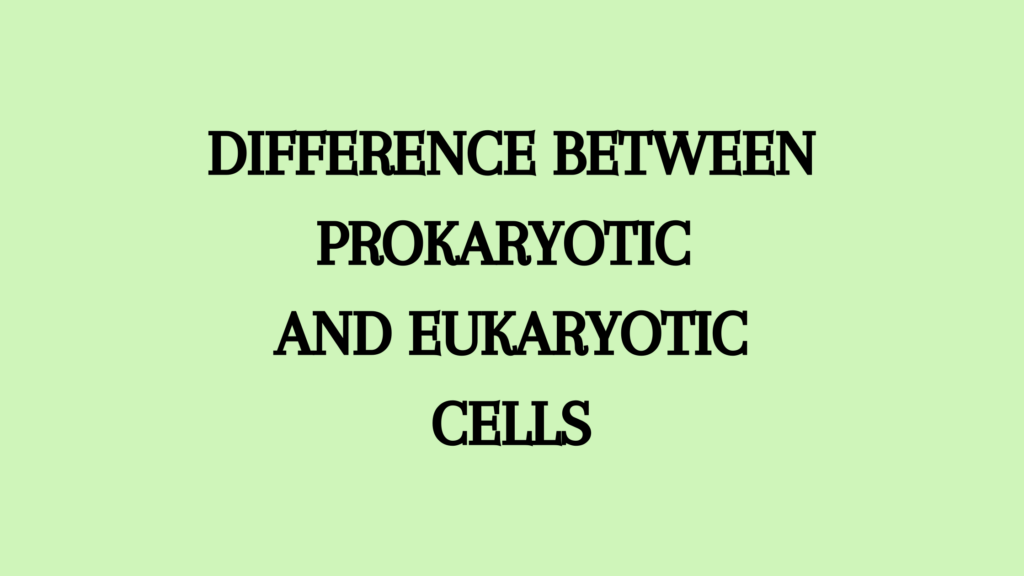The term prokaryotic cells or prokaryon is taken from the Greek word which means primitive nucleus. In these types of cells, the nuclear materials such as protoplasm, nucleic acid, etc are in direct contact with cytoplasm because the nuclear material is not enclosed in a definitive membrane.
These characteristics of prokaryotic cells show that they are the most primitive ones. In viruses, bacteria, blue-green alga, and mature RBC in mammals do not contain definite cellular organelles. Instead, they have a primitive and undifferentiated form.
Characteristics of Prokaryotic Cells
A prokaryotic cell nucleus without a nuclear membrane is called a nucleoid, forming a sort of nuclear complexity. The cytoplasm of prokaryotes lacks well-defined cytoplasmic organelles such as endoplasmic reticulum, Golgi bodies, mitochondria, centrioles, etc.
A prokaryotic cell is essentially a single membranous system. The membrane just surrounds the cells and there is no membrane around the genetic material. Prokaryotes may be unicellular or colonies of independent cells. Now the prokaryotes are said to form a superkingdom, the Prokaryota.
Prokaryotic cells have the following features.
- Nuclear material lies directly in the cytoplasm without a nuclear envelope. Such a nuclear material is called a nucleoid. It consists of a single highly coiled chromosome that is permanently attached to the cell membrane at one point.
- There is no nucleolus present.
- DNA is double-stranded helical but the chromosome is circular and without a protein coat. Such a simple chromosome is called a prochromosome.

Cell Membrane and Cell Wall
- The cell membrane regulates the movement of molecules in and out of the cell. It also bears respiratory enzymes. Generally surrounded by a non-living rigid/semi-rigid cell wall.
- The cell wall protects, maintains its shape, and provides support and strength to the cell.
- The prokaryotic cell wall consists of unique polymers of amino sugars and amino acids.
- The walls of some bacteria contain some toxic substances.
- Some organisms like PPLO-mycoplasma lack a cell wall.
- A slim polysaccharide or polypeptide capsule often surrounds the cell wall.
- It protects the wall against desiccation, antibiotics, and viral attacks.
- It also enables bacteria to stick to surfaces, soil particles, rocks in streams, or host cells.
Cytoplasm and Cell Organelles
- Cytoplasm lacks ER, mitochondria, Golgi apparatus, centrosome, vacuoles, lysosomes, microfilaments, and microtubules.
- It contains a variety of organic and inorganic organelles including glycogen, lipids, polyphosphate granules, biosynthetic enzymes, RNAs, and mRNAs.
- Ribosomes are the only cytoplasmic organelles, found in prokaryotes. They are smaller than the ribosomes of eukaryotic cells.
- Some bacteria have mesosomes which are the infolds of cell membranes that bear respiratory enzymes.
- Photosynthetic bacteria ( BGA ) have membranous thylakoids or photosynthetic lamellae to hold pigments. These are derived from cell membranes.
- Cytoplasm shows no streaming movements.
- Phagocytosis, pinocytosis, and exocytosis do not occur. Substances enter and leave the cells directly through the cell membrane.
Cell Division and Reproduction
- Mitotic apparatus is not formed during cell division. Cell membrane helps to segregate the replicated product of chromosomes to the daughter cell.
- Replication of DNA is normally continuous throughout the cell cycle.
- Transcription and translation occur in the cytoplasm. The mRNA does not require processing.
- Most prokaryotes are non-sexual organisms. No process comparable to meiosis gamete formation or true fertilization occurs.
- Prokaryotes are haploid having only one copy of a chromosome.
- Prokaryotic cells are much smaller and have much less DNA that codes for fewer proteins than eukaryotic cells.
- Bacterial cells may bear simple flagella formed of a protein called flagellin. There are no flagella in BGA. Flagella may show gliding movements or peculiar back-and-forth oscillatory movements.
- Many prokaryotes have small circular DNA molecules called plasmids in addition to the nucleoid.
- Plasmids may encode proteins that enable the organism to resist antibiotics or other toxic materials.
- Many bacteria bear short, rod-like, non-motile projections called pili or fimbriae on the surface.
- Pili are formed of a protein called pilin.
- They are used for attachment to surfaces, and food, and some bacteria have tubular sex pili.
- Some prokaryotic cells form gas vacuoles in the cytoplasm.
Conclusion
Prokaryotic cells, though simple in structure, have all the biochemical methods required to synthesize organic materials necessary for life.
In most cases, they can prepare these compounds from simple organic precursors. In this respect, the prokaryotes are more versatile in synthetic activities than eukaryotes. They are very suitable for the study of biochemistry and molecular biology on account of their simple structure, rapid growth, and mode of reproduction. For example- E.coli is abundantly used for genetical studies.




